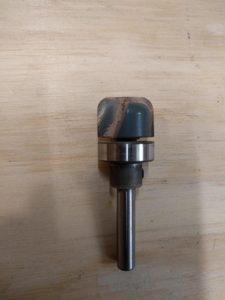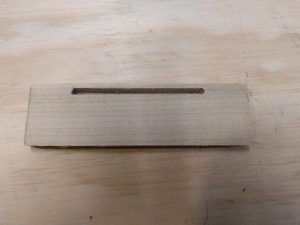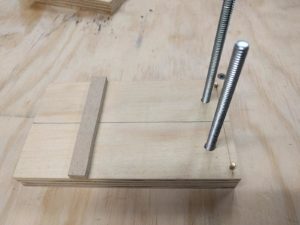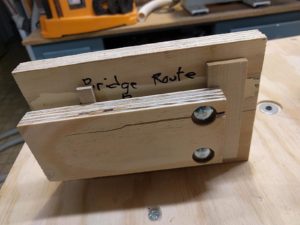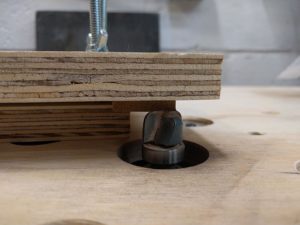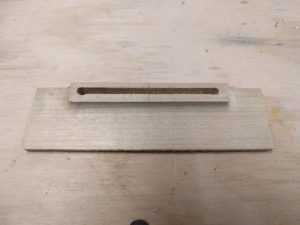I am believer that the lighter the bridge, the better, since a string does not have to move as big piece of wood to make the soundboard underneath vibrate. For this reason I have been making my bridges with a negative curve away from the saddle to minimize the amount of wood, while still maintaining enough strength to support the saddle. I used to do this on the spindle sander by sticking the bridge to a backing board with double-stick tape, and running this along a fence to sand away the wood and leave the negative curve.
The problems with this are that I had to change the drum size to a smaller drum to get a tighter curve, which requires resetting the fence. The bridge would have to be re-positioned and the process repeated to get the curve on the wings of the bridge. Also, the smaller drums because they are not moving sandpaper past the wood as fast did not sand fast and tended to burn the wood. The was particularly problematic on hard wood like Casuarina (which seems rather resistant to abrasion in general). Overall it used to take me about an hour to shape a bridge on the sander. So….I came up with a better idea …
I was leafing through a tool catalogue and found these router bits that are designed to shape shallow bowls. They come with a top bearing designed to follow a pattern, and cut a flat bottomed hole with a curved edge.
The first step in making a bridge has always been to route the channel for the saddle. This is done on the router table, with a spiral bit and a fence.
I made up a pattern which is the eventual top of the bridge, and inserted brass registration pins to align the saddle slot exactly. There is a spacer on the pattern that matches the general thickness of the bridge. There are also through bolts which will be used with a backing plate to clamp the bridge into the jig.
In use the bridge is inserted over the brass pins, and the backing plate tightened with the wing-nuts, firmly holding the bridge in place, up against the backing board.
Then it is just a matter of going the the router table, setting the height of the bowl-cutting router bit so the bearing follows the template and all but a little of the bridge is cut away. Once you get the router height set you can cut a bunch of bridges without adjusting anything.
Less than a minute of slow multi-pass routing and one has a shaped bridge, no burn marks, and a very tight radius which further minimizes the amount of wood/weight in the bridge.
I have made up patterns for different sized bridges (concert, tenor, etc.) all of which fit the same backing plate. I can make 4 bridges in a fraction of the time it used to take me to make one, and the results are better. A classic win-win.

